Welcome, Wildcat readers! The Northwestern Alumni Association offers a virtual book clubs for alumni, parents, and friends. Registrants can log on to our private online forum to discuss current books, which pull from a variety of literary genres. Join now to share your opinions, post questions, and participate in live discussions with select authors.
Northwestern University Alumni Book Club
Prior to each two-month reading cycle, participants vote to select the next book. Options may include fiction, non-fiction, memoirs, lifelong learning and personal growth works, and other genres.
Already a member?
There is no cost to participate—you just need a copy of the book. You only need to sign up once to participate. Discussions will take place on separate forums.
Fall Selection (October—December)
Northwestern University Alumni Book Club

The Berry Pickers by Amanda Peters
A four-year-old Mi’kmaq girl goes missing from the blueberry fields of Maine, sparking a mystery that will haunt the survivors, unravel a family, and remain unsolved for nearly fifty years.
July 1962. Following in the tradition of Indigenous workers from Nova Scotia, a Mi’kmaq family arrives in Maine to pick blueberries for the summer. Weeks later, four-year-old Ruthie, the family’s youngest child, vanishes. She is last seen by her six-year-old brother, Joe, sitting on a favorite rock at the edge of a berry field. Joe will remain distraught by his sister’s disappearance for years to come.
In Maine, a young girl named Norma grows up as the only child of an affluent family. Her father is emotionally distant, her mother frustratingly overprotective. Norma is often troubled by recurring dreams and visions that seem more like memories than imagination. As she grows older, Norma slowly comes to realize there is something her parents aren’t telling her. Unwilling to abandon her intuition, she will spend decades trying to uncover this family secret.
Past Selections for 2023—2024
Northwestern University Alumni Book Club
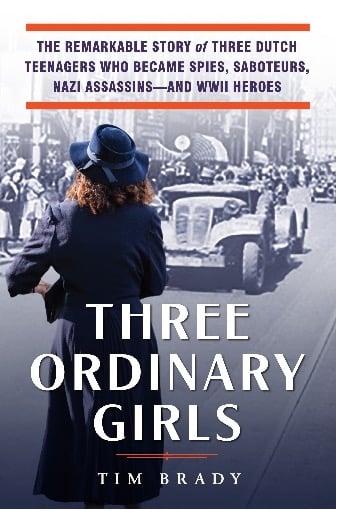
Three Ordinary Girls by Tim Brady
May 10, 1940. The Netherlands was swarming with Third Reich troops. In seven days it's entirely occupied by Nazi Germany. Joining a small resistance cell in the Dutch city of Haarlem were three teenage girls: Hannie Schaft, and sisters Truus and Freddie Oversteegen who would soon band together to form a singular female underground squad.
Smart, fiercely political, devoted solely to the cause, and "with nothing to lose but their own lives," Hannie, Truus, and Freddie took terrifying direct action against Nazi targets. That included sheltering fleeing Jews, political dissidents, and Dutch resisters. They sabotaged bridges and railways, and donned disguises to lead children from probable internment in concentration camps to safehouses. They covertly transported weapons and set military facilities ablaze. And they carried out the assassinations of German soldiers and traitors--on public streets and in private traps--with the courage of veteran guerilla fighters and the cunning of seasoned spies.
In telling this true story through the lens of a fearlessly unique trio of freedom fighters, Tim Brady offers a never-before-seen perspective of the Dutch resistance during the war. Of lives under threat; of how these courageous young women became involved in the underground; and of how their dedication evolved into dangerous, life-threatening missions on behalf of Dutch patriots--regardless of the consequences.
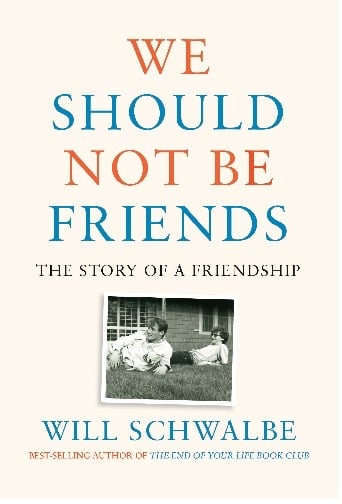
We Should Not be Friends by William Schwalbe
By the time Will Schwalbe was a junior at college, he had already met everyone he cared to know: the theater people, writers, visual artists and comp lit majors, and various other quirky characters including the handful of students who shared his own major, Latin and Greek. He also knew exactly who he wanted to avoid: the jocks. The jocks wore baseball caps and moved in packs, filling boisterous tables in the dining hall, and on the whole seemed to be another species entirely, one Will might encounter only at his own peril.
All this changed dramatically when Will collided with Chris Maxey, known to just about everyone as Maxey. Maxey was physically imposing, loud, and a star wrestler who was determined to become a Navy SEAL (where he would later serve for six years). Thanks to the strangely liberating circumstances of a little-known secret society at Yale, the two forged a bond that would become a mainstay of each other's lives as they repeatedly lost and found each other and themselves in the years after graduation.
From New Haven to New York City, from Hong Kong and Panama to a remarkable school on an island in the Bahamas--through marriages and a divorce, triumphs and devastating losses--We Should Not Be Friends tracks an extraordinary friendship over decades of challenge and change.
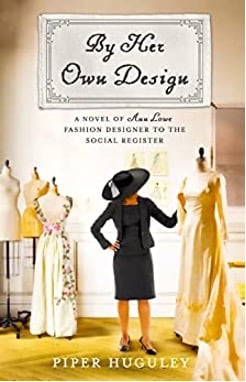
By Her Own Design by Piper Huguley
1953, New York City
Less than a week before the society wedding of the year where Jacqueline Bouvier will marry John F. Kennedy, Jr, a pipe bursts at Ann Lowe's dress shop and ruins eleven dresses, including the expensive wedding dress, a dress that will be judged by thousands. A Black designer who has fought every step of the way, Ann knows this is only one struggle after a lifetime of them. She and her seamstresses will find the way to re-create the dresses. It may take all day and all night for the next two weeks to accomplish the task, but they will do it.
1918, Tampa
Raised in Jim Crow Alabama, Ann learned the art of sewing from her mother and her grandmother, a former slave, who are the most talented seamstresses in the state. After Ann elopes at twelve with an older man who soon proves himself to be an abusive alcoholic, her dreams of becoming a celebrated designer seem to be put on hold. But then a wealthy Tampa socialite sees Ann's talent and offers her an amazing opportunity--the chance to sew and design clothing for Florida's society elite. Taking her young son in the middle of the night, Ann escapes her husband and embarks on the adventure of a lifetime.
Based on the true story of one of the most famous designers of the twenties through the sixties who has since been unjustly forgotten, By Her Own Design is an unforgettable novel of determination despite countless obstacles and a triumph celebrated by the world.
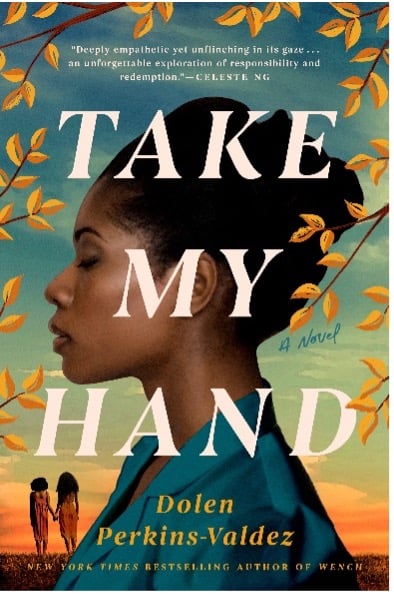
Take My Hand by Dolen Perkins-Valdez
Montgomery, Alabama 1973. Fresh out of nursing school, Civil Townsend has big plans to make a difference, especially in her African American community. At the Montgomery Family Planning Clinic, she intends to help women make their own choices for their lives and bodies.
But when her first week on the job takes her down a dusty country road to a worn down one-room cabin, she’s shocked to learn that her new patients are children—just 11 and 13 years old. Neither of the Williams sisters has even kissed a boy, but they are poor and Black and for those handling the family’s welfare benefits that’s reason enough to have the girls on birth control. As Civil grapples with her role, she takes India, Erica and their family into her heart. Until one day, she arrives at the door to learn the unthinkable has happened and nothing will ever be the same for any of them.
Decades later, with her daughter grown and a long career in her wake, Dr. Civil Townsend is ready to retire, to find her peace and to leave the past behind. But there are people and stories that refuse to be forgotten. That must not be forgotten. Because history repeats what we don’t remember.

This Tender Land by William Kent Krueger
In the summer of 1932, on the banks of Minnesota's Gilead River, the Lincoln Indian Training School is a pitiless place where Native American children, forcibly separated from their parents, are sent to be educated. It is also home to Odie O’Banion, a lively orphan boy whose exploits constantly earn him the superintendent’s wrath. Odie and his brother, Albert, are the only white faces among the hundreds of Native American children at the school. After committing a terrible crime, Odie and Albert are forced to flee for their lives along with their best friend, Mose, a mute young man of Sioux heritage. Out of pity, they also take with them a brokenhearted little girl named Emmy. Together, they steal away in a canoe, heading for the mighty Mississippi in search for a place to call home. Over the course of one unforgettable summer, these four orphan vagabonds journey into the unknown, crossing paths with others who are adrift, from struggling farmers and traveling faith healers to displaced families and lost souls of all kinds. With the feel of a modern classic, This Tender Land is an en¬thralling, bighearted epic that shows how the magnificent American landscape connects us all, haunts our dreams, and makes us whole.
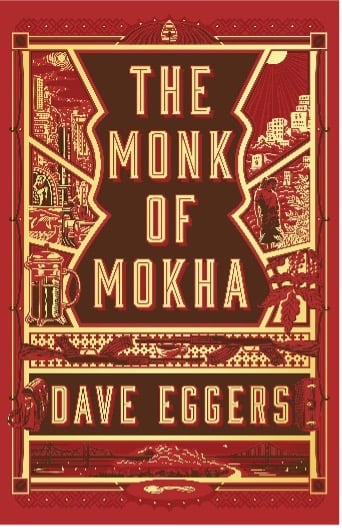
The Monk of Mokha by Dave Eggers
Mokhtar Alkhanshali is twenty-four and working as a doorman when he discovers the astonishing history of coffee and Yemen’s central place in it. He leaves San Francisco and travels deep into his ancestral homeland to tour terraced farms high in the country’s rugged mountains and meet beleagured but determined farmers. But when war engulfs the country and Saudi bombs rain down, Mokhtar has to find a way out of Yemen without sacrificing his dreams or abandoning his people.
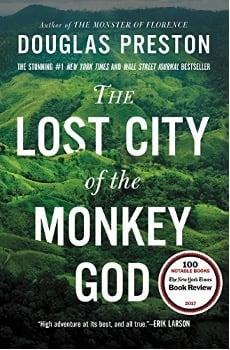
The Lost City of the Monkey God by Douglas Preston
Since the days of conquistador Hernán Cortés, rumors have circulated about a lost city of immense wealth hidden somewhere in the Honduran interior, called the White City or the Lost City of the Monkey God. Indigenous tribes speak of ancestors who fled there to escape the Spanish invaders, and they warn that anyone who enters this sacred city will fall ill and die. In 1940, swashbuckling journalist Theodore Morde returned from the rainforest with hundreds of artifacts and an electrifying story of having found the Lost City of the Monkey God-but then committed suicide without revealing its location.
Three quarters of a century later, author Doug Preston joined a team of scientists on a groundbreaking new quest. In 2012 he climbed aboard a rickety, single-engine plane carrying the machine that would change everything: lidar, a highly advanced, classified technology that could map the terrain under the densest rainforest canopy. In an unexplored valley ringed by steep mountains, that flight revealed the unmistakable image of a sprawling metropolis, tantalizing evidence of not just an undiscovered city but an enigmatic, lost civilization.
Venturing into this raw, treacherous, but breathtakingly beautiful wilderness to confirm the discovery, Preston and the team battled torrential rains, quickmud, disease-carrying insects, jaguars, and deadly snakes. But it wasn't until they returned that tragedy struck: Preston and others found they had contracted in the ruins a horrifying, sometimes lethal-and incurable-disease.
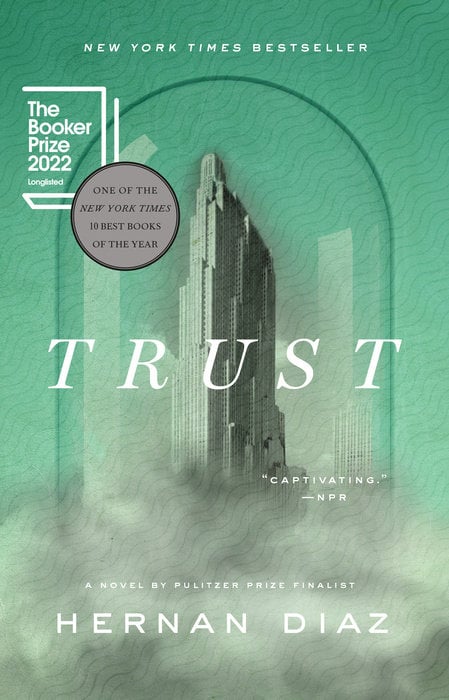
Trust by Hernan Diaz
Even through the roar and effervescence of the 1920s, everyone in New York has heard of Benjamin and Helen Rask. He is a legendary Wall Street tycoon; she is the daughter of eccentric aristocrats. Together, they have risen to the very top of a world of seemingly boundless wealth—all as a decade of excess and speculation draws to an end. But at what cost have they acquired their immense fortune? This is the mystery at the center of Bonds, a successful 1937 novel that all of New York seems to have read. Yet there are other versions of this tale of privilege and deceit.
Hernan Diaz's TRUST elegantly puts these competing narratives into conversation with one another—and in tension with the perspective of one woman bent on disentangling fact from fiction. The result is a novel that spans over a century and becomes more exhilarating with each new revelation.
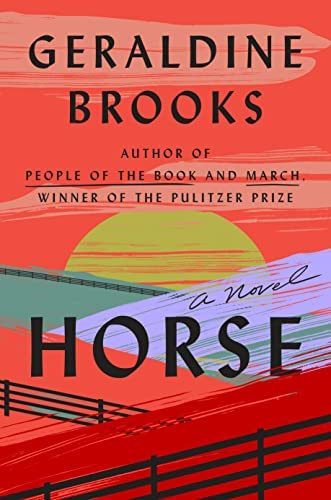
Horse by Geraldine Brooks
Kentucky, 1850. An enslaved groom and a bay foal forge a bond of understanding that will carry the horse to record-setting victories across the South.
New York City, 1954. A gallery owner celebrated for taking risks on edgy contemporary painters becomes obsessed with a 19th-century equestrian oil painting of mysterious provenance.
Washington, DC, 2019. A Smithsonian scientist from Australia and a Nigerian American art historian find themselves connected through the horse—one studying its bones for clues to its power and endurance, the other uncovering the lost history of the unsung Black horsemen who were critical to its racing success.
Based on the true story of the thoroughbred Lexington, Horse is a novel of art and science, love and obsession, and our unfinished reckoning with racism.
To learn more check out the archive of past book club selections and discussions here.